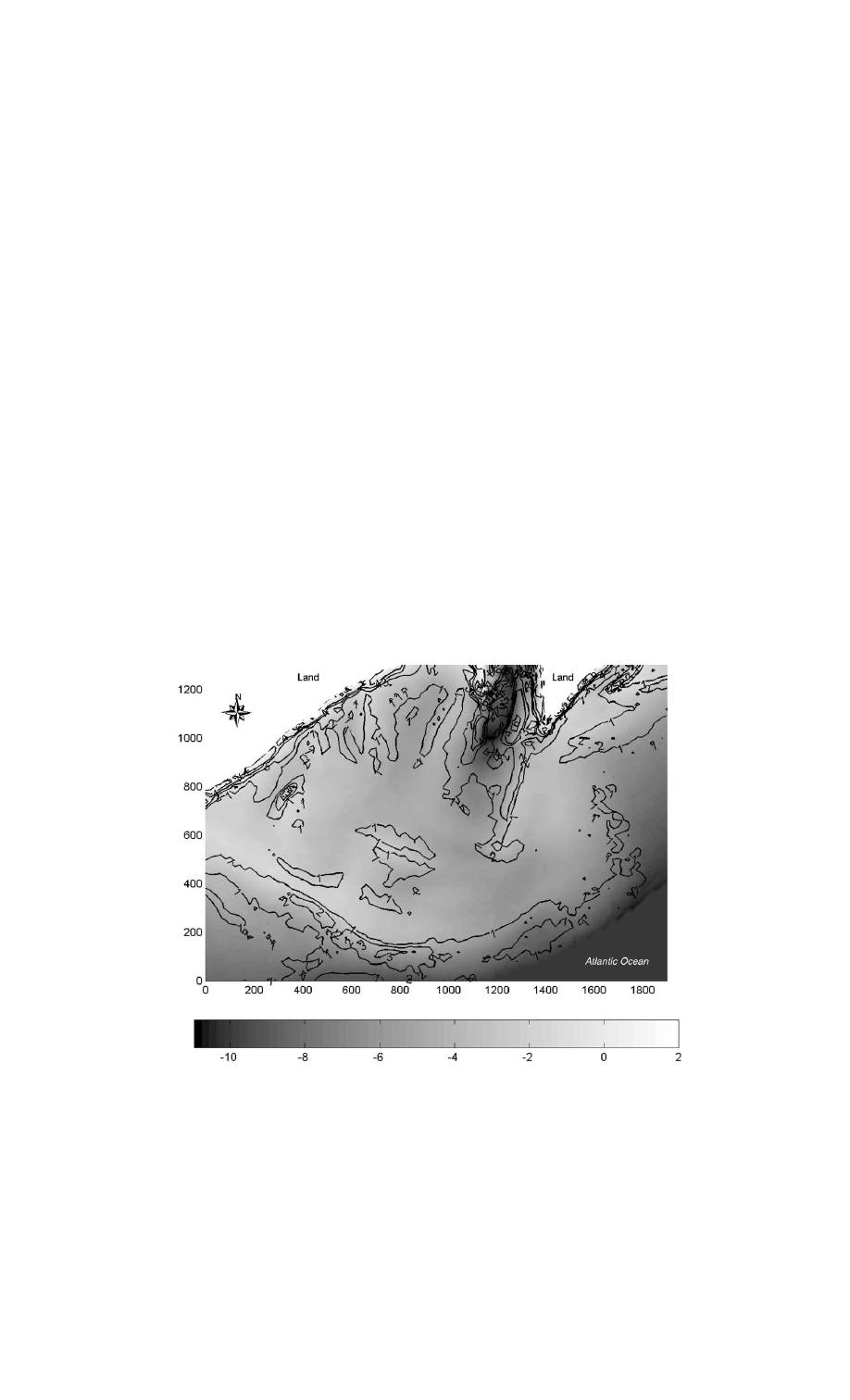
58
F.S. Buonaiuto, N.C. Kraus / Coastal Engineering 48 (2003) 5165
holes, and around the seaward perimeter of the ebb-
toward the predominant direction of the wave ad-
tidal lobe (Figs. 2 4). The distribution of slope
vance. Limiting (maximum) slopes that were com-
magnitudes around the 1998 configuration of the
puted from transects located in these regions ranged
from 4j to 6j. Scour holes located near jetties con-
ebb shoal at Shinnecock Inlet is displayed in Fig. 4,
tained the steepest slopes, ranging from 10j to 12j
and Fig. 5 is a cross-section of the ebb shoal at this
inlet that also illustrates notation. Typically, slopes on
(Fig. 4).
the ebb shoal and related bar features do not exceed
Ebb shoals that experience higher waves were
4 6j, and seaward slopes of the ebb shoal are 1 2j
found to exhibit steeper slopes than those dominated
steeper than landward slopes. The lateral slopes asso-
by tidal forcing and with relatively smaller waves
ciated with navigation channels shortly after dredging
(Fig. 6). The linear regression relationship between
can be greater, with maximum values ranging from 6j
the maximum slope observed on the ebb shoal and the
to 8j. For natural channels, continual reworking of
significant wave height was (R2 = 0.75):
sediment by waves and tidal current smoothes the
bebb 1:61 2:57HS
2
bottom and reduces fluctuations, producing milder
slopes that range from 3j to 5j. The channel slopes
where bebb is the limiting ebb-shoal slope in degrees,
decrease seaward, with magnitudes varying between
1j and 2j on the outer ebb shoal. The largest
and HS is the average-annual significant wave height
gradients (steepest slopes) associated with the periph-
in meters. Data sets collected after dredging across the
ery of the ebb-tidal shoals were usually oriented
ebb shoal (which temporarily creates steeper slopes)
Fig. 4. Contours of slopes at Shinnecock Inlet ebb shoal, 1998 survey. Steepest regions are located along the lateral walls of the inlet channels,
around the periphery of the ebb shoal, and along the shoreline.




 Previous Page
Previous Page
